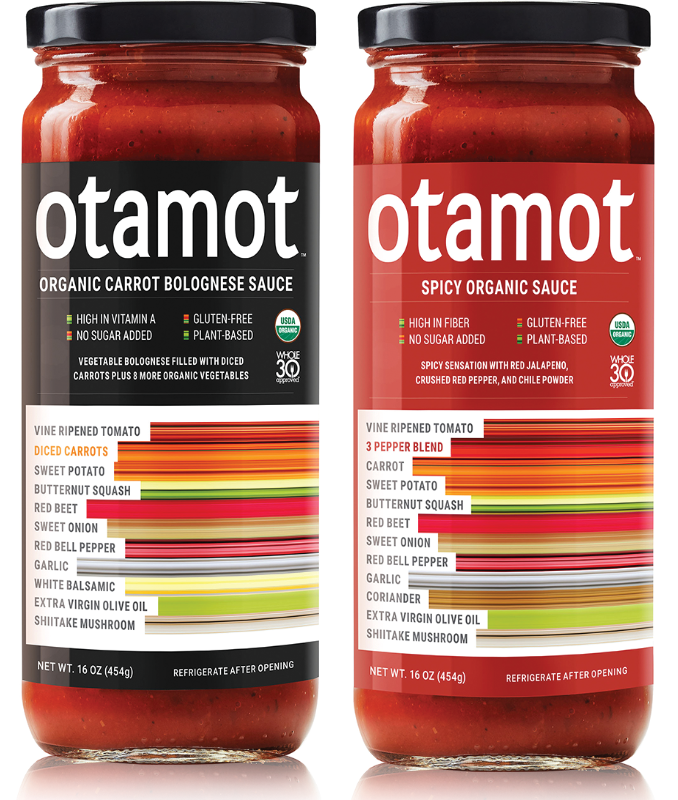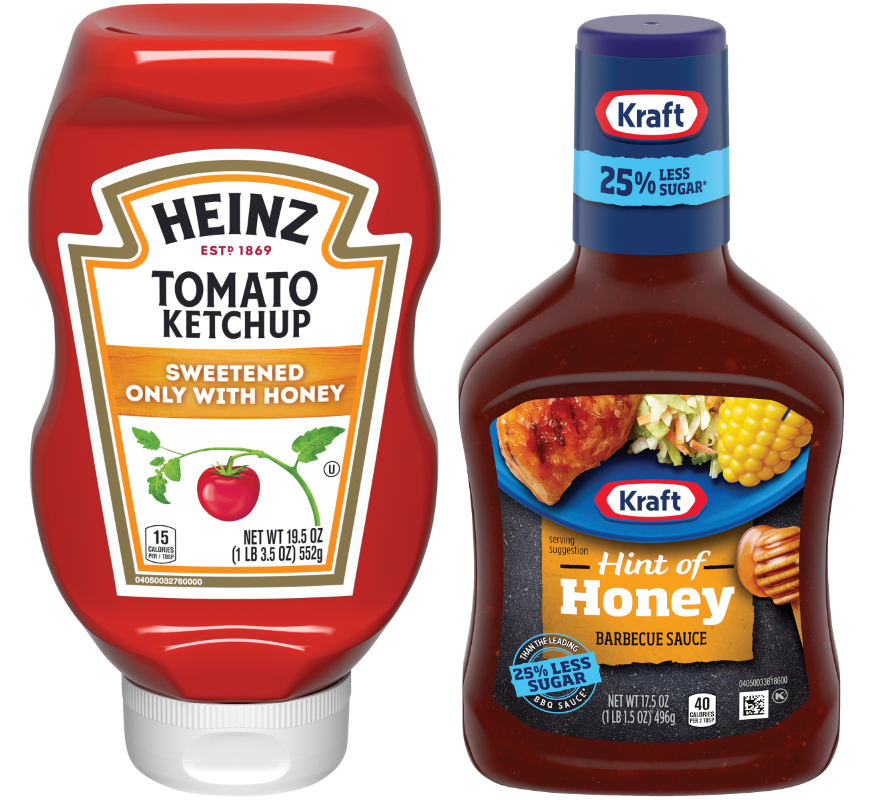CHICAGO — The Dietary Guidelines for Americans 2020-2025 did not heed the advice of the Dietary Guidelines Advisory Committee to reduce the added sugars recommendation from less than 10% to less than 6% of total calories per day. This omission likely will not deter health- and wellness-aspiring consumers from cutting sugar on their own.
Several approaches to reducing sugar intake exist. One is choosing foods with reduced sugar or no added sugars. Such foods include condiments and sauces that are often unexpected, yet concentrated sources of sugar. Offering reduced-sugar varieties of condiments is an opportunity for manufacturers to differentiate in a crowded marketplace. Today, it’s happening in everything from marinara to ranch to teriyaki.
Shoppers are seeking tailored food choices to balance taste preferences and wellness goals. ADM Outside Voice research from the Archer Daniels Midland Co., Chicago, found 61% of consumers said sugar reduction is important for their sauces, syrups and dressings, and 47% review the type of sweetener when purchasing these items.
Building back sensory experience
The Food and Drug Administration defines added sugars as those added during the processing of foods, foods packaged as sweeteners, sugars from syrups and honey, and sugars from concentrated fruit or vegetable juices. These sugars are 4-calorie-per-gram simple carbohydrates (monosaccharides and disaccharides) with varying levels of sweetness that are readily digested and used by the body as energy.
“It is less challenging to reduce the sugar content in condiments and sauces when the primary purpose of the sweetener is to provide a sweet taste or to balance other flavors in the sauce, such as acidity of a tomato in a marinara sauce or saltiness in a dipping sauce,” said Andrea Belford, senior business scientist, Ingredion Inc., Westchester, Ill. “When sugar provides both sweetness and other functional properties, such as color, viscosity and texture — by way of flow, mouthfeel and cling — and water activity, you must consider both taste and functional build back.”
61% of consumers said sugar reduction is important for their sauces, syrups and dressings.
Source: ADM Outside Voice
It’s also important to consider how the product is distributed, stored and used. Some condiments and sauces have standards of identity, which may further limit ingredient options.
“Sweeteners aren’t just about sweet,” said Anne Marie Butler, global director – strategic territories, The Edlong Corp., Elk Grove Village, Ill. “In fact, it can be just as important in creating a flavor balance and mouthfeel. Sugar also has an effect on microbial growth.’’
Removing sugar needs to be done in such a way that these factors are addressed.
“Sugar is used to add bulk and maintain viscosity,” said Nancy Hughes, president, Apura Ingredients, Chino, Calif. “A challenge a lot of products face as they formulate sugar out of their applications is that the sauce may become runny, which consumers do not like.”
Sheri O’Brien, vice president of sales and marketing, BioNeutra North America Inc., Edmonton, Alta., said, “Sugar not only enhances the succulence of savory foods, but it also makes sauces gooey so they can be poured or spread neatly.”
Toolbox of ingredients
There is never an easy way to reformulate a product. When an ingredient is removed, it must be replaced with one or more other ingredients.
“The key is finding the right balance, the sweet spot, between nutrition, taste and functionality,” Ms. Butler said. “Edlong has created a line of flavors specifically to work with existing sugar or natural sugar in a product to enhance the overall sweetness perception. We recently worked on a reduced-sugar tomato sauce where the levels of acidity were unappetizing but necessary for shelf stability. With the use of our sweet flavors, along with a low-level cream flavor, we were able to match the profile of the full-sugar version.”

Tyler Burns, food scientist, Wixon, St. Francis, Wis., said, “Reducing sugar may require the addition of completely unrelated ingredients. Examples include gums, starches, flavors, fibers and more.”
A systems approach often is required, because reformulation is dependent on inherent sweetness as well as original sugar content.
“If you are only targeting a 10% to 20% sugar reduction in a traditionally sweet sauce, such as barbecue, there won’t be as much reformulation needed,” said Kim Reichert, director of culinary at ADM. “Reducing sugar by 25% or more in sauce with high sugar content, such as ketchup or pasta sauce, can alter the overall organoleptic profile. To solve these formulation challenges, product developers should look at replacing or increasing solids to help with mouthfeel.”
Increased tomato paste content, for example, helps replace solids. Strategic use of other vegetables and seasonings may assist with mouthfeel and flavor.
That’s the basis of the sauces from Otamot Foods, Brooklyn, NY. The original variety of Otamot, which is tomato spelled backwards, is a tomato sauce made with 10 vegetables. The company’s carrot Bolognese sauce is a tomato and carrot sauce made with nine vegetables, with the diced carrot base mimicking a thick Bolognese. Both sauces contain no added sugars, and labels colorfully showcase the ingredients inside each jar. Otamot is thicker than typical prepared tomato sauces because it has more concentrated vegetables and less added water.
Keto Primo, Temecula, Calif., produces a line of sugar-free barbecue sauces formulated to promote the ketogenic way of eating. With only two net carbohydrates per serving, the condiments are sweetened with monk fruit.
“Creating our traditional barbecue flavor was a challenge,” said Emily Adams, co-founder. “To make the sauce compliant with the strict requirements of the ketogenic diet, we had to eliminate many ingredients that make a classic barbecue sauce, such as ketchup, corn syrup, brown sugar, molasses, soy sauce and artificial colors.”
The company decided early on to not use artificial sweeteners. After much trial and error, Ms. Adams determined monk fruit extract mixed with erythritol was the best sugar replacement.
“It blended well with the other ingredients for a great overall flavor profile,” Ms. Adams said. “We also tested it on the grill and in the oven. The sauce caramelized beautifully.”

Sarah Diedrich, marketing director – sweetening solutions and fibers at ADM, said, “We used our stevia and erythritol solutions to develop a better-for-you hickory smoked barbecue sauce with zero added sugars. The sweetening solution helped replace the sweetness, rebalance flavor and build back functionality. Modified tapioca starch and natural flavors and colors provided the proper cling, bold color and sweet and tangy flavor.
“Specialty syrups, such as tapioca, rice and reduced-sugar glucose syrups, can easily replace traditional corn syrup in sauces, dressings and condiments without sacrificing on functionality, taste and texture. We are seeing an ever-increasing need for these syrups as consumer health and wellness demands and clean label trends continue to evolve.”
BioNeutra offers sweeteners with high viscosity, excellent pH stability and heat tolerance, Ms. O’Brien said. They have been shown to mitigate off-flavors from high-intensity sweeteners, are 100% water soluble, and are effective as binders, humectants and bulking agents.
The ingredient line is based on isomaltooligosaccharide sourced from pea starch. It functions as a low-calorie sweetener, a prebiotic and a soluble dietary fiber.
Another option is allulose, which is a rare sugar that is absorbed by the body, but not metabolized. It is not declared as an added sugar on nutrition labels. Liquid allulose may help reduce calorie content while still delivering a caramelized flavor note in some finished products.
Honey, while considered an added sugar when included in condiments and sauces, does possess a better-for-you halo that gives permission to consume. Honey is also a multi-functional sweetener that assists with product integrity, including aiding in emulsification.
“Honey’s acids make up only 0.5% of its solids, but the role these acids play is invaluable to the flavor of a finished product,” said Catherine Barry, director of marketing, National Honey Board, Frederick, Colo. “Replacing a liquid sweetener with honey is relatively easy in any type of formula. When replacing a dry sweetener with honey, product developers will need to account for the 17% moisture content of honey. Honey also is composed of fructose and glucose, making it up to 50% sweeter than sugar. This may allow a product developer to reduce the overall amount of sweetener ingredients used in a formula.”





